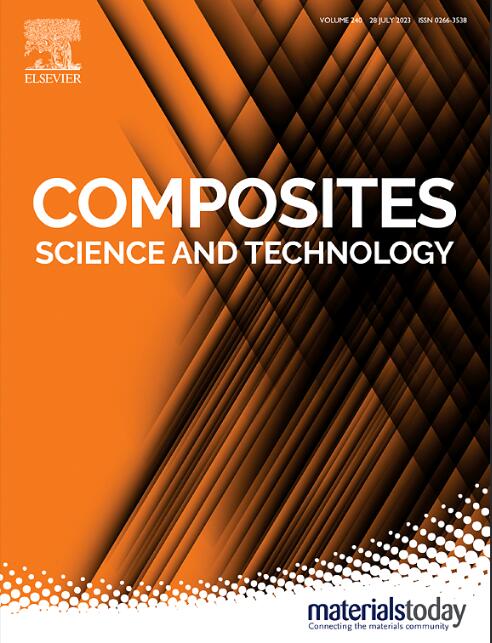预埋SiC颗粒对超声焊接碳纤维增强热塑性复合材料接头界面强度的提高
IF 8.3
1区 材料科学
Q1 MATERIALS SCIENCE, COMPOSITES
引用次数: 0
摘要
提高连续碳纤维增强热塑性复合材料(CFRTP)超声焊接接头的界面结合强度对其工业应用至关重要。本研究提出了一种在焊接界面预埋碳化硅(SiC)颗粒的新型增强方法,可显著提高CFRTP接头的界面强度和整体力学性能。嵌入SiC颗粒产生钉钉效应,有利于纤维间载荷传递,抑制裂纹扩展,提高节理的搭接抗剪强度。通过搭接剪切试验、断口和焊缝形貌分析、焊接界面温度监测等综合评价,系统研究和阐明了SiC颗粒增强CFRTP超声焊接接头的断裂模式和产热机理。最佳补强条件为120# SiC颗粒(粒径为120 μm),补强量为20 mg,焊接时间为1.0 s,接头强度达到22.35 MPa,比未补强的接头强度提高23.85%。这种可扩展的方法通过结构合理、快速连接轻质CFRTP组件,解决了航空航天、汽车和可再生能源领域的关键需求。相比之下,石墨烯粉末由于其较小的尺寸、二维层状结构和层间滑移行为,无法提高界面结合强度,导致界面剪切破坏,力学性能降低。这些发现强调了颗粒形态和特征在增强界面结合强度方面的重要性。本文章由计算机程序翻译,如有差异,请以英文原文为准。

Enhancement of pre-embedding SiC particle on interfacial strength in ultrasonic welded carbon fiber reinforced thermoplastic composite joints
Enhancing the interfacial bonding strength of ultrasonic welded joints in continuous carbon fiber-reinforced thermoplastic composites (CFRTP) is critical for their industrial application. This study introduces a novel reinforcement method by pre-embedding silicon carbide (SiC) particles at the welding interface, which significantly improves the interfacial strength and overall mechanical performance of CFRTP joints. The embedded SiC particles induce a pinning effect that facilitates load transfer among fibers, and suppresses crack propagation, and enhances the joint's lap shear strength. Through comprehensive evaluations, including lap shear tests, morphological analysis of fractures and welding seams, and temperature monitoring at the welding interface, the fracture modes and heat generation mechanisms of SiC particle-reinforced ultrasonic welded CFRTP joints are systematically investigated and clarified. The optimal conditions for reinforcement are identified as 120# SiC particles (with particle size of 120 μm) at a deposition amount of 20 mg, achieving a joint strength of 22.35 MPa at the welding time of 1.0 s, which corresponds to an enhancement of 23.85 % compared to non-reinforced joints. This scalable approach addresses critical demands in aerospace, automotive, and renewable energy sectors through structurally sound, rapid joining of lightweight CFRTP components. In contrast, graphene powder, due to its smaller size, two-dimensional layered structure, and interlayer slippage behavior, fails to enhance the interfacial bonding strength, resulting in shear failure at the interface and reduced mechanical performance. These findings underscore the importance of particle morphology and characteristics in the context of interfacial bonding strength enhancement.
求助全文
通过发布文献求助,成功后即可免费获取论文全文。
去求助
来源期刊

Composites Science and Technology
工程技术-材料科学:复合
CiteScore
16.20
自引率
9.90%
发文量
611
审稿时长
33 days
期刊介绍:
Composites Science and Technology publishes refereed original articles on the fundamental and applied science of engineering composites. The focus of this journal is on polymeric matrix composites with reinforcements/fillers ranging from nano- to macro-scale. CSTE encourages manuscripts reporting unique, innovative contributions to the physics, chemistry, materials science and applied mechanics aspects of advanced composites.
Besides traditional fiber reinforced composites, novel composites with significant potential for engineering applications are encouraged.
 求助内容:
求助内容: 应助结果提醒方式:
应助结果提醒方式:


